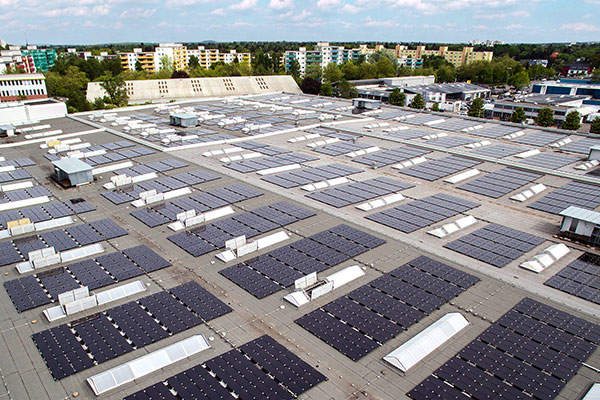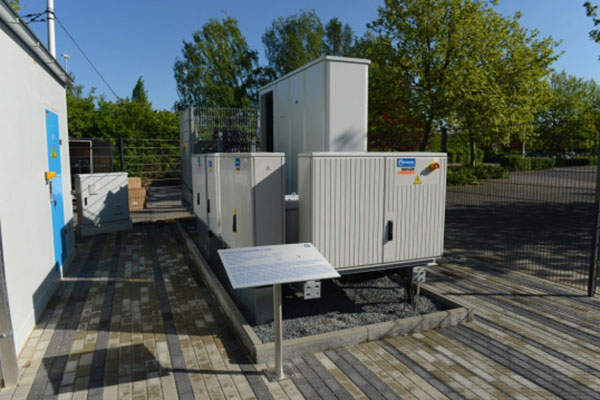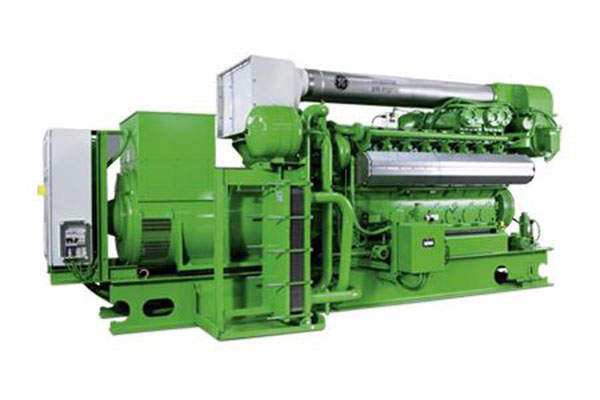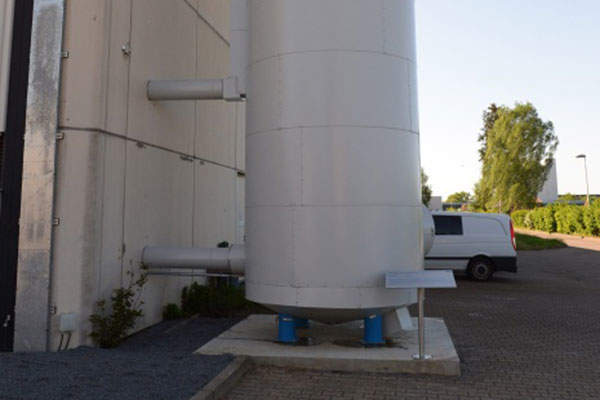The GE Hybrid Power Plant is a pilot project that comprises photovoltaic, combined heat and power (CHP), and energy storage technologies to produce and manage the power output.
The bulk of the power during winters is produced by the CHP, whereas the solar power system produces more power during summers. The battery storage deals with any temporary surpluses or shortages of power.
The plant is based on a scalable business model that can easily be adapted for larger units. It was developed in collaboration with Kofler Energies and BELECTRIC. Kofler Energies and GE’s planning office BLS Energieplan developed the facility.
BELECTRIC developed and constructed the solar PV system. Kofler Energies will provide the software to arbitrage the energy supply and demand, store excess power and heat, and sell electricity to the grid.
Location of the hybrid power plant
The facility is located at GE’s Power Conversion facility in Marienfelde, Berlin. Power Conversion, one of GE’s biggest facilities in Germany, is a centre of excellence for frequency converters.
GE hybrid power plant make-up
A partnership led by California-based PowerLight has constructed a 10MW photovoltaic facility in Bavaria, Germany.
The hybrid power plant includes a 600kW solar power system, comprising 6,900 First Solar FS-390 thin-film solar modules installed in 345 lines on the rooftop of the production hall. The PV system produces 621kW of electricity at peak. A central GE LV8000 inverter converts the DC power generated by the solar panels into AC power.
The CHP unit, consisting of a GE Jenbacher J312 gas engine and integrated heat storage, runs on natural gas to generate 400kW of electricity and heat for the site during winters.
A 200kW battery stores the surplus power during high-generation and low-consumption times. The stored power can later be released to the plant network and used to meet any increase in power demand, while if the battery is full, surplus power is supplied to the public grid. The heat storage volume is 25m³.
The three systems complement to create a self-sufficient and reliable source of energy.
Power production at the pilot hybrid power plant
The plant generates 1MW of power, 600kW from solar and the remaining from gas. Part of the electricity is consumed by the Power Conversion production site, while the remaining is supplied to the grid. The plant reduces energy costs by 30% compared to conventional power generation systems.
Technology used at GE’s factory
The solar power system at the hybrid power plant is the world’s first to use 1,500V architecture for a roof-mounted system. The amount of material used for cabling and power electronics are minimised and degradation effects prevented due to the high operating voltage. The system was installed using BELECTRIC’s PlanTec substructure, which is light in weight and does not require penetration through the roof.
The flexible GE engine either ramps up or reduces production depending on the PV solar energy output. It is equipped with 12 cylinders, weighs approximately 8,000kg and is compact enough to be fitted into a 40ft container. The engine also consumes less fuel, generates low CO₂ emissions and has a potential of 90% efficiency in CHP mode.
The battery solution comprises 154 battery blocks that offer a storage capacity of 200kWh and a maximum discharge power of 100kW.
Energy management system
The hybrid power plant is backed with an efficient energy management system, which controls the functioning of the boilers, valves and pumps optimally.
The central energy management system remotely accesses all the data related to the measurement readings and the consumption patterns to adjust the power supply. It also has separate counters to measure the renewable (solar) and non-renewable (CHP) electricity.
Germany’s renewable power market
Germany has set a target to generate 80% of its electricity from renewable sources by 2050, as well as increase CHP-based production to 25% by 2025. The German renewable energy market is currently focused on solar and wind energy, while the government aims to shift focus to hybrid options in the future.








